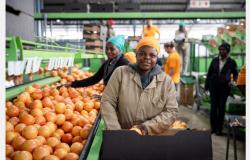
Taiwan, China, United States and… Bromont? The breakup of the semiconductor industry presents a unique opportunity for the manufacturing corridor that Canada is trying to establish in southeastern Quebec.
In any case, 2024 is a pivotal year for this industry. In fact, if in recent years there was an edition not to be missed of Computex, the annual conference held in the always very humid atmosphere of Taipei and which brings together for three days the elite of the global technology industry, it This is indeed the one that took place at the beginning of June. The CEOs of Nvidia, AMD, Arm Holdings, Intel, Qualcomm were all on site in the first hours of this event attended by some 50,000 professionals, specialists and international observers of the sector.
We are only at the beginning of an AI megacycle that will last at least ten years
These multinationals have ambitious tasks to accomplish in Taiwan during Computex. With the accelerated emergence of artificial intelligence (AI) applications capable of quickly increasing their turnover and their stock market value, they must establish themselves as leaders in their marketing. Each in turn, their top leaders took the stage to promise a new revolution powered by AI, then to clarify that without them, this revolution may not take place.
“We are only at the beginning of an AI megacycle that will last at least ten years,” promised AMD CEO Lisa Su. AMD, Intel and Qualcomm are intent on catching up with rival Nvidia in what appears to be a race to the top of the AI processor market. All took advantage of Computex to unveil their next generation processors, which, without exception, include a mention of AI in their name.
The manufacturing challenge
Obviously, these IT giants will then have to have their chips manufactured. This is where it gets tricky. Another reason for their presence at Computex was to reassure their Taiwanese partners, who produce more than half of the semiconductors on the planet, but who see their position threatened by a geopolitical context which increasingly pits China against the United States. United.
“We have great respect for the Taiwanese ecosystem,” declared Intel CEO Patrick Gelsinger during his visit to Computex. But we see a change in its composition that reflects the global situation. » Intel, along with Samsung and even TSMC, a Taiwanese company, have announced plans for new factories in the United States in recent months.
Starting in 2022, the United States has implemented an ambitious campaign to repatriate semiconductor production, through a federal program called the Chips Act. A year and a half later, American industry saw a 10% increase in manufacturing capacity, which could grow by another 20% by the end of the decade.
Last fall, the United States, Japan and the Netherlands added another layer by deciding to stop exporting to China the tools necessary for the manufacture of next generation chips, likely to power applications particularly efficient artificial intelligence. China in turn responded by blocking the sale of certain American chips on its territory.
Bromont-Albany or Bromont-Taipei?
It’s no secret that Canada would like to make the Bromont region, in southeastern Quebec, an international semiconductor manufacturing hub. There, there is talk of a semiconductor corridor that would connect Estrie to the Albany region, in New York State.
Computex is the epicenter of global computer component production, but Canada had no formal presence there. One booth, sponsored by the Ontario government and made up of a handful of the province’s small technology companies, is the only incarnation of the maple leaf.
However, Canada is not indifferent to what is happening in Taiwan or even in China. The Canadian Trade Office in Taiwan has been actively approaching Taiwanese manufacturers wishing to produce semiconductors outside of Asia for several months. Jim Nickel, its chief executive, told local media earlier this year that he would like to see the two countries cooperate more in the manufacture of these increasingly critical components for the global economy.
Ahead of an investment of $187 million by IBM in Bromont, last April, the Canadian Prime Minister, Justin Trudeau, and the American President, Joe Biden, had already affirmed their desire to develop the Bromont-Albany corridor . President Biden has implemented a US$50 million aid program to help businesses in these two regions develop their manufacturing capacity. Ottawa set aside up to 250 million in its most recent budget to do the same.
“With ever-increasing international competition, particularly from China, there is no doubt that we must unite to create a North American market for semiconductors as well as for batteries or solar panels,” declared Justin Trudeau on this occasion.
In the stands of a Computex located 12,000 kilometers from Bromont, between two announcements on the importance of artificial intelligence, the message from semiconductor producers is the same: production has not finished regionalizing .
Transportation and accommodation costs for this report were paid by Intel, without any control over its content.





